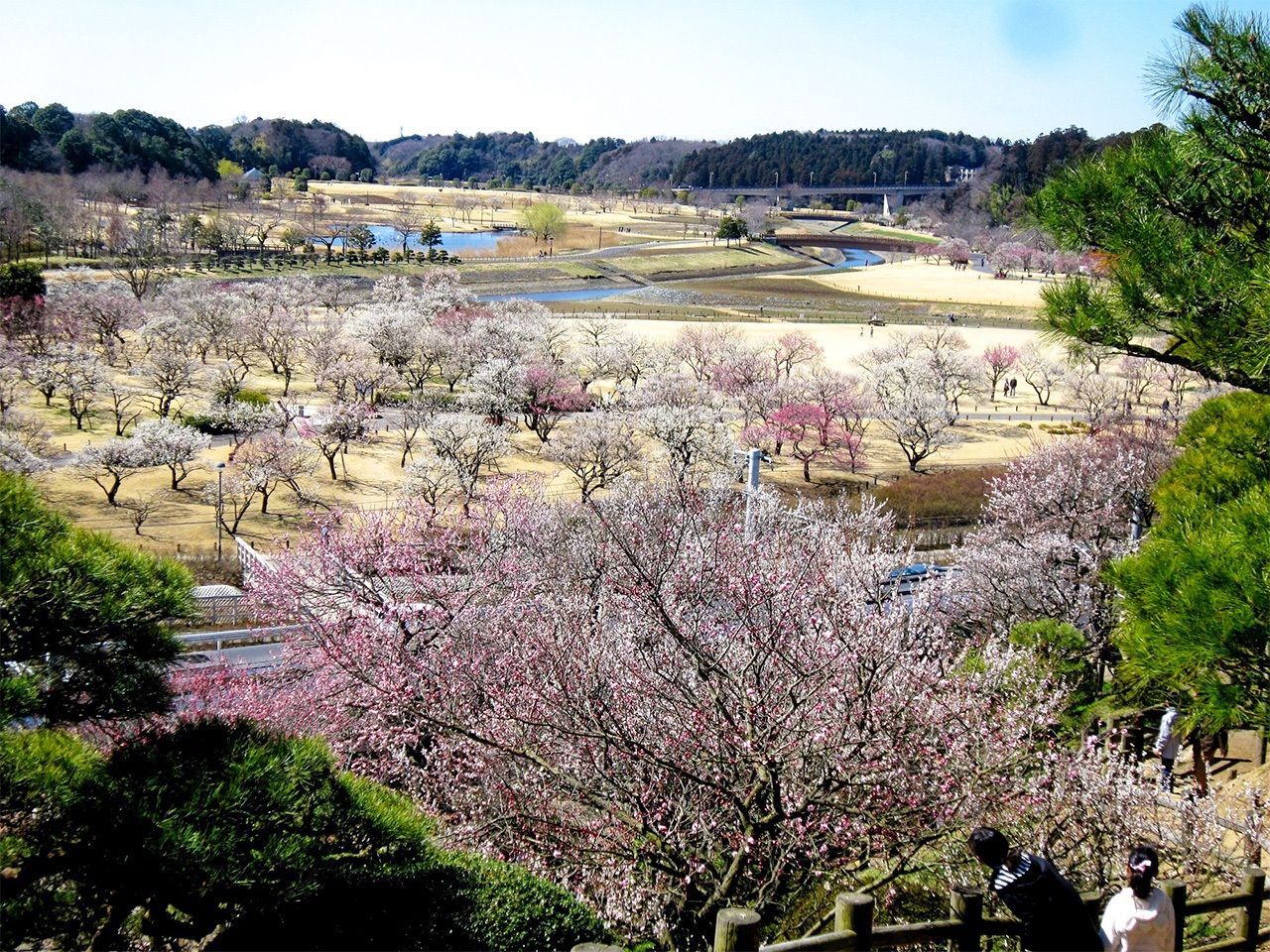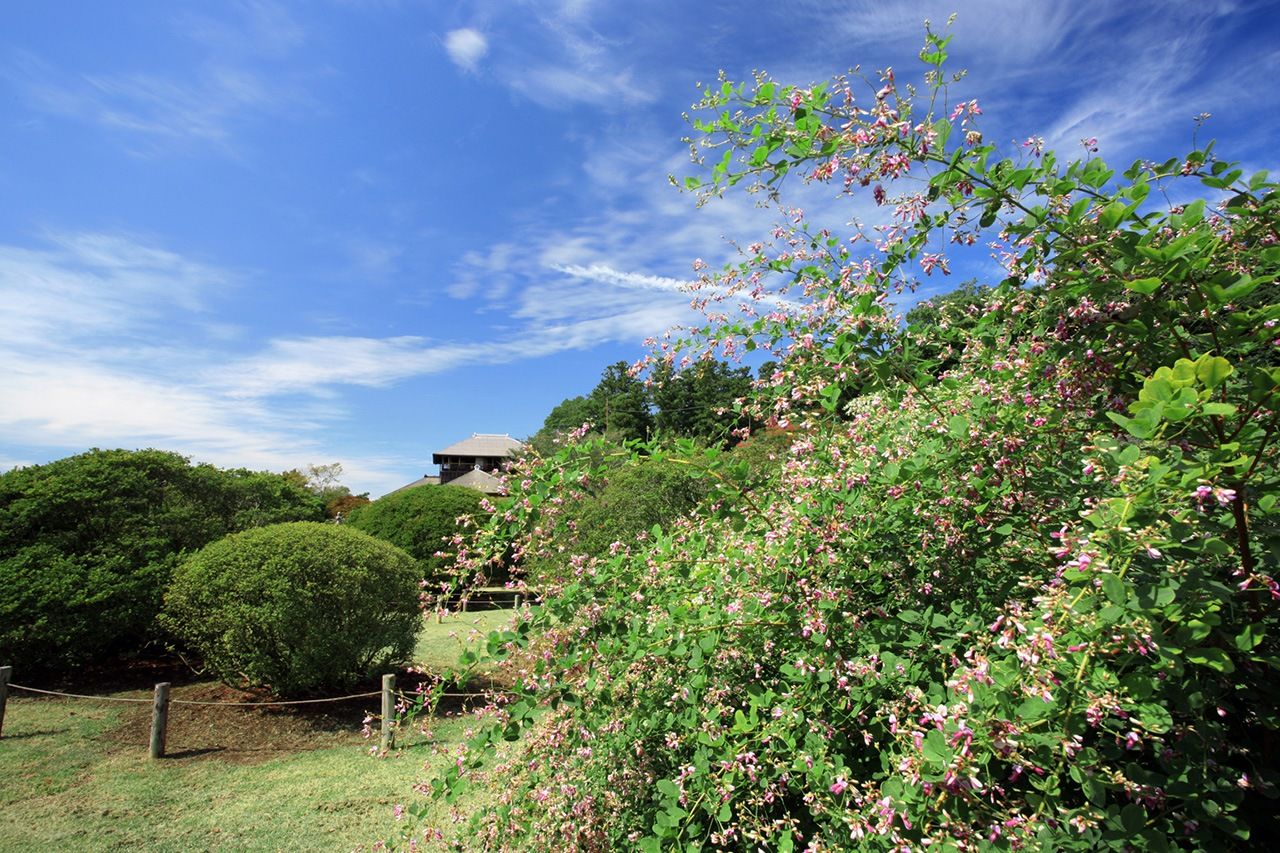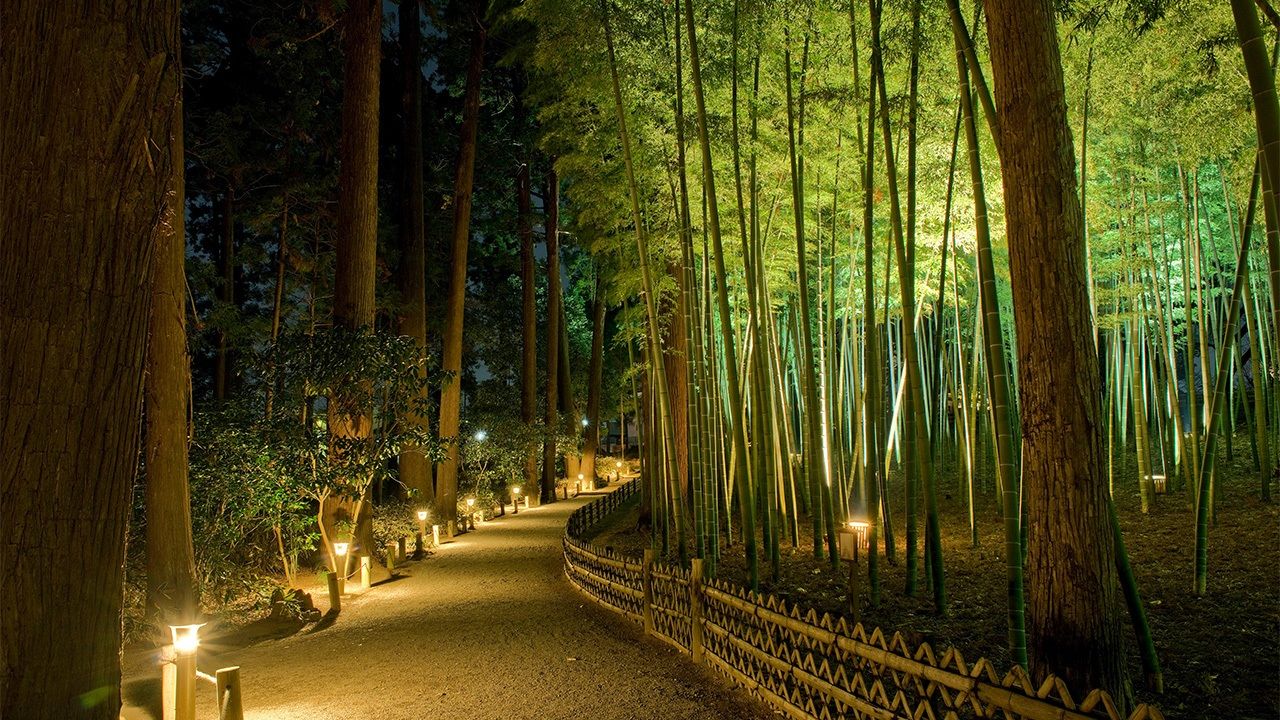
Japan’s Three Great Gardens
Culture History Travel Art- English
- 日本語
- 简体字
- 繁體字
- Français
- Español
- العربية
- Русский
Japan’s “three great gardens”—Kairakuen, Kenrokuen, and Kōrakuen—were all created by daimyō (feudal lords) during the Edo period (1603–1868). The sense of beauty from centuries past still has the power to inspire today.
All three were created in the kaiyū (circuit) style, based around a central pond, that typifies the Edo period. People enjoyed the scenery while walking along garden paths, in contrast to zakanshiki gardens, which were designed to be viewed from indoor spaces such as the drawing rooms of palatial homes.
Kairakuen (Mito, Ibaraki Prefecture)
Created in 1842 by the ninth daimyō of the Mito Domain, Tokugawa Nariaki. The name Kairakuen, which means a “garden that can be enjoyed together,” was derived from a passage in the Chinese collection Mencius that states: “The ancients shared their pleasures with the people, which allowed them to deepen their own pleasures.”
At first, only samurai and religious practitioners were allowed to enter the garden, but eventually it was opened to the general public as well.
The garden is renowned for its plum trees. There are around 3,000 plum trees in total, of around 100 different varieties. Other seasonal highlights that can be enjoyed include the cherry blossoms in spring, the blooming azaleas in early summer, the vibrant green mōsō bamboo and cedar trees in midsummer, and the beautiful bush clover and maple trees in autumn.
- Address: 1-chōme Tokiwachō, Mito, Ibaraki Prefecture
- Admission: Adults ¥300, ¥150 for junior high school students and younger and those 70 or over. Free admission for all before 9:00 am.
- Access: 20 minutes by bus bound for Kairakuen Garden from the north exit of JR Mito Station.
Kenrokuen (Kanazawa, Ishikawa Prefecture)
The Maeda clan that ruled the Kaga Domain created this 11.4-hectare garden outside of Kanazawa Castle. The garden was perfected over a period of around 180 years, starting from the reign of Maeda Tsunanori, the fifth chieftain of the Maeda clan.
The changing natural beauty of the seasons is one of the great charms of the garden, particularly the seasonal view in winter when the pine trees protected by yukitsuri rope structures are covered in snow. The famous two-legged lantern in the garden, which often appears on postcards and in guidebooks, is named the Kotoji Lantern because it resembles the bridge on the koto, a traditional Japanese musical instrument.
Near the garden, which is rated three stars in the Michelin Green Guide, is Kanazawa Castle and the 21st Century Museum of Contemporary Art.
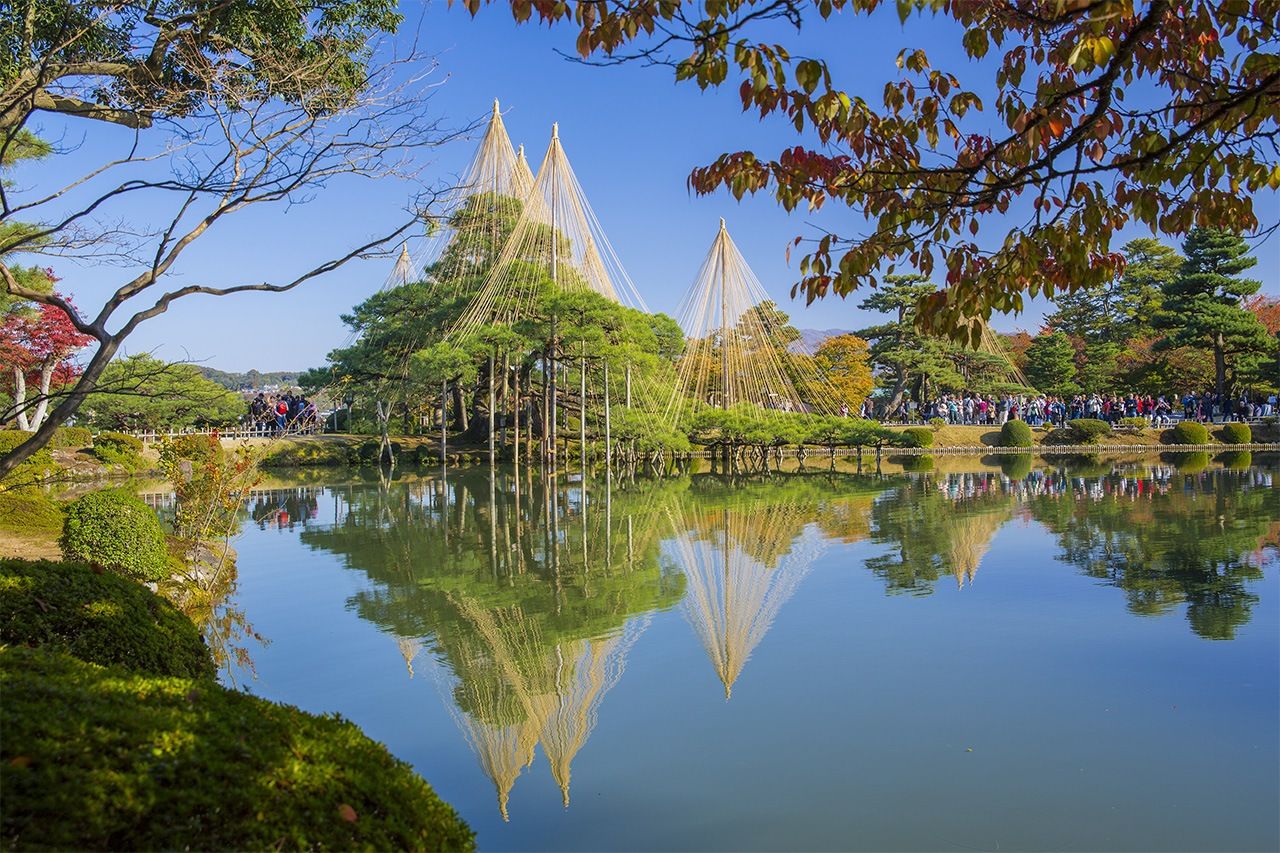
(Courtesy Kanazawa municipal government)
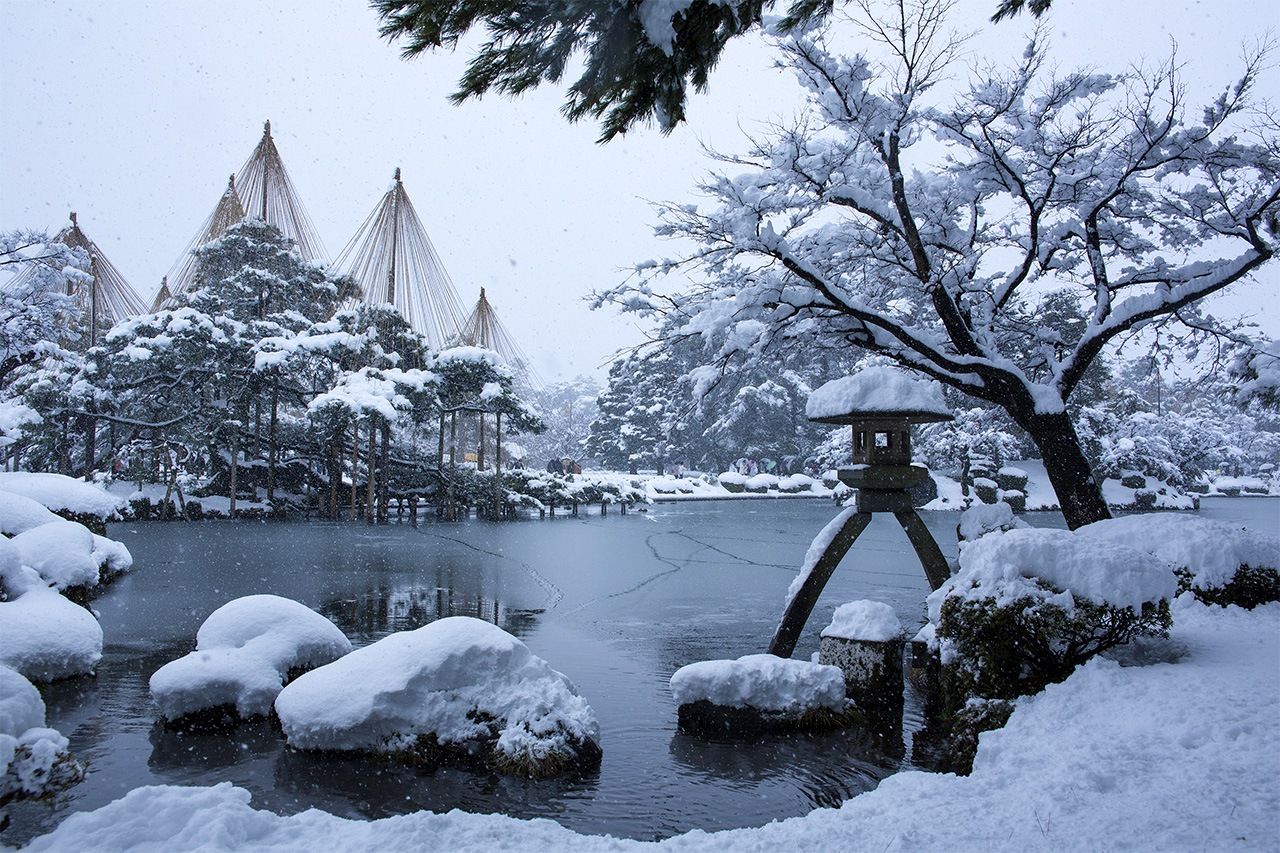
(Courtesy Kanazawa municipal government)
- Address: 1-1 Marunouchi, Kanazawa, Ishikawa Prefecture
- Admission: Adults (18 or over) ¥320, children (aged from 6 to 17) ¥100.
- Access: Hokuriku Rail Road’s Kenrokuen Shuttle and Kanazawa Loop buses run every 15 to 20 minutes from JR Kanazawa Station.
Kōrakuen Garden (Okayama, Okayama Prefecture)
Ikeda Tsunamasa, the second daimyō of the Okayama Domain, had this large garden created for his own enjoyment. People living in the domain were also granted the right to enter occasionally, and Tsunamasa, who loved nō performances, would perform his own nō dancing in front of them. During the reign of the Okayama daimyō who came after Tsunamasa, days were designated to open the garden to the public. The garden suffered damage from flooding in 1934 and aerial bombardment in 1945, but was restored after the war based on historical sources that included drawings from the Edo period. Today visitors can enjoy garden scenery that is much the same as in the past.
The garden was awarded three stars by the Michelin Green Guide. The view from across the pond is a popular angle from which to take photographs of Okayama Castle.
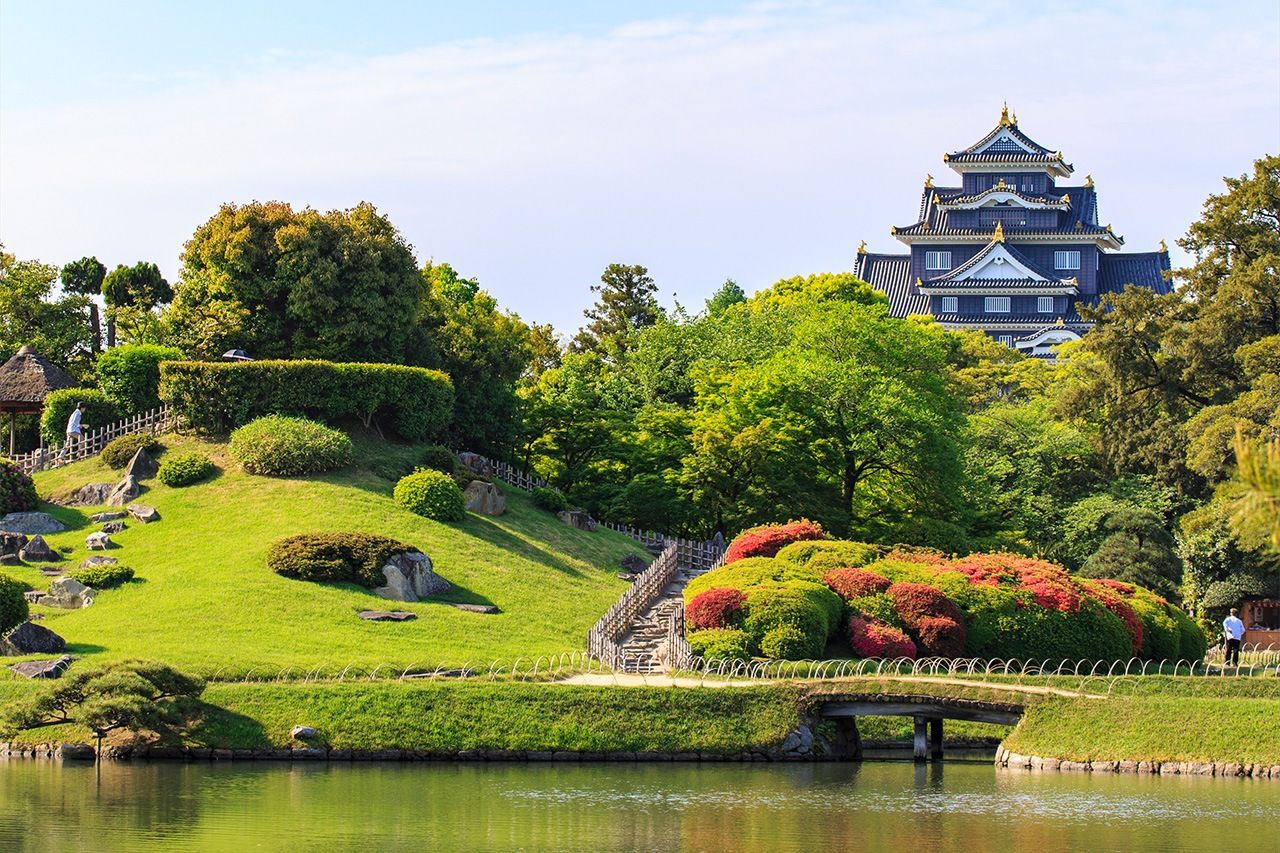
(Courtesy Okayama Prefecture Official Tourism Guide)
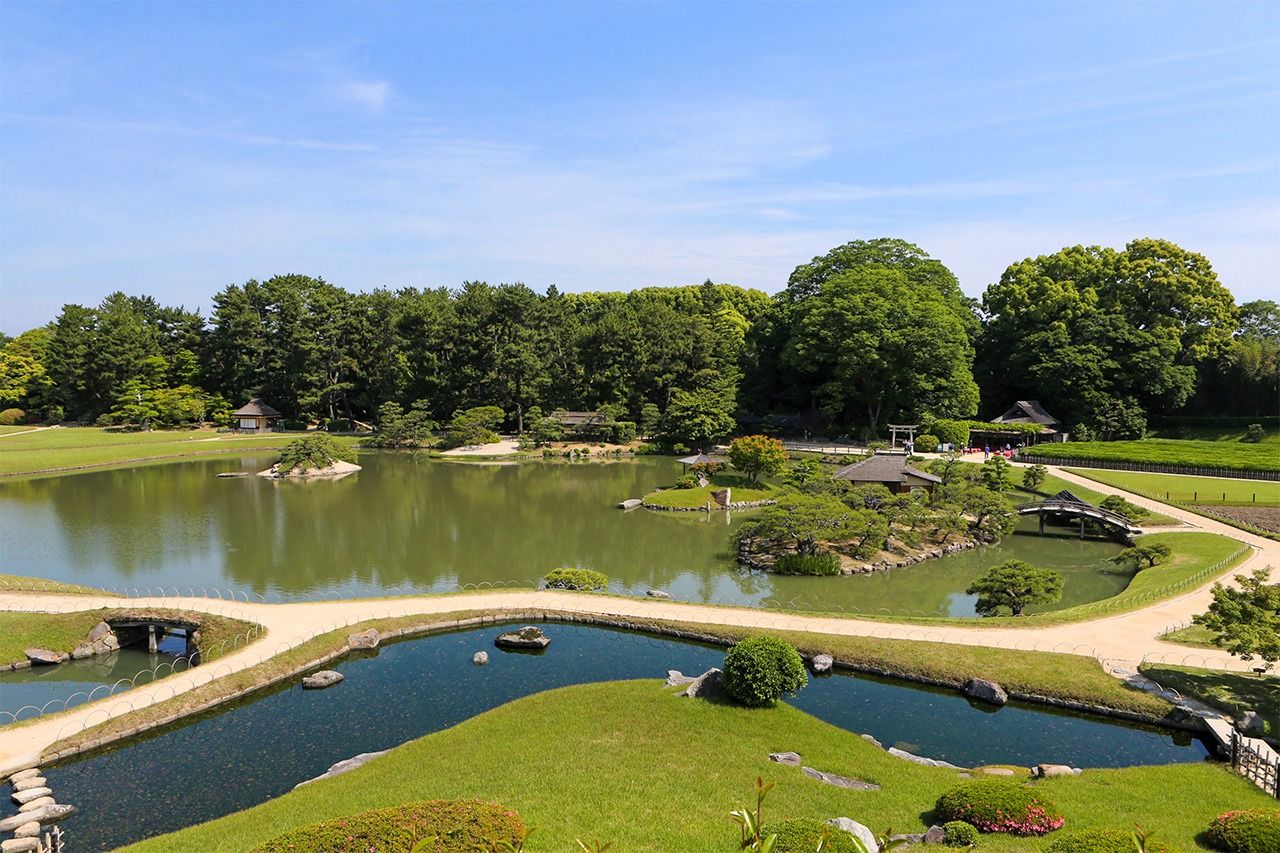
(Courtesy Okayama Prefecture Official Tourism Guide)
- Address: 1-5 Kōrakuen, Kita-ku, Okayama, Okayama Prefecture
- Admission: Adults (15 or over) ¥410, seniors (65 or over) ¥140. Free admission for high school students and junior high school students and younger.
- Access: 25-minute walk, or 10 to 15 minutes by bus from Okayama Station.
(Translated from Japanese. Banner photo: Mōsō bamboo trees in Kairakuen Garden. © Kairakuen Garden.)
